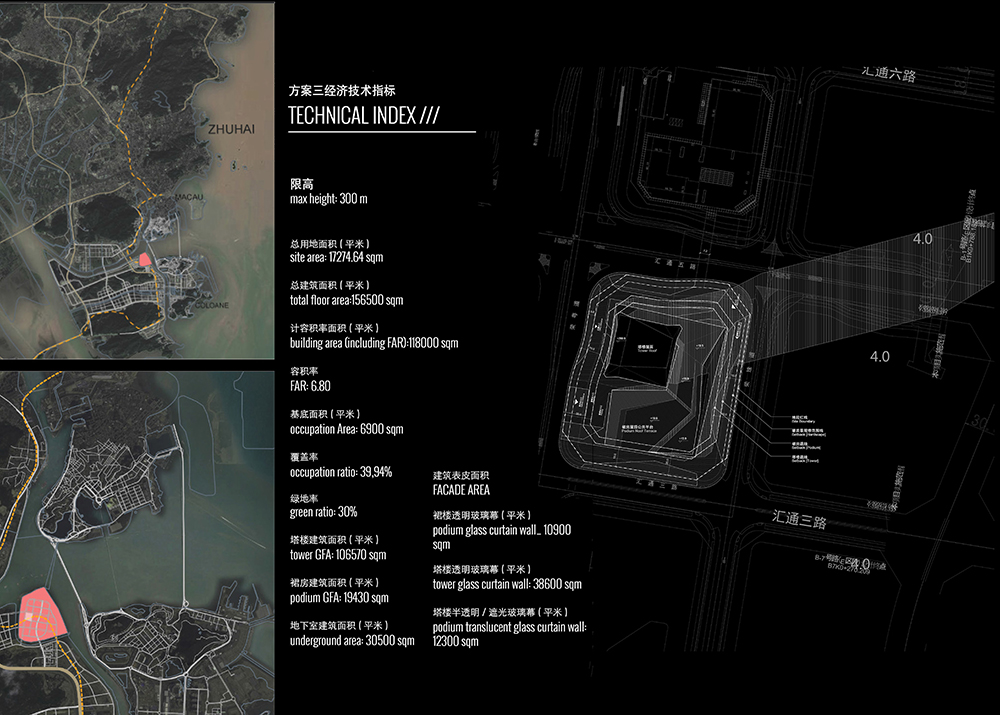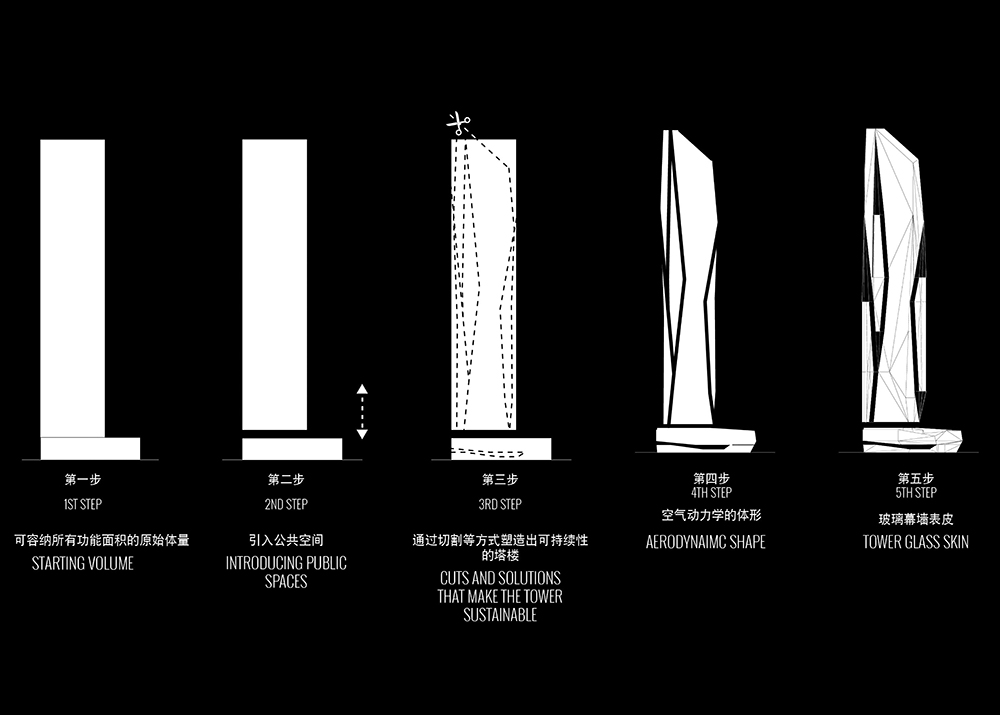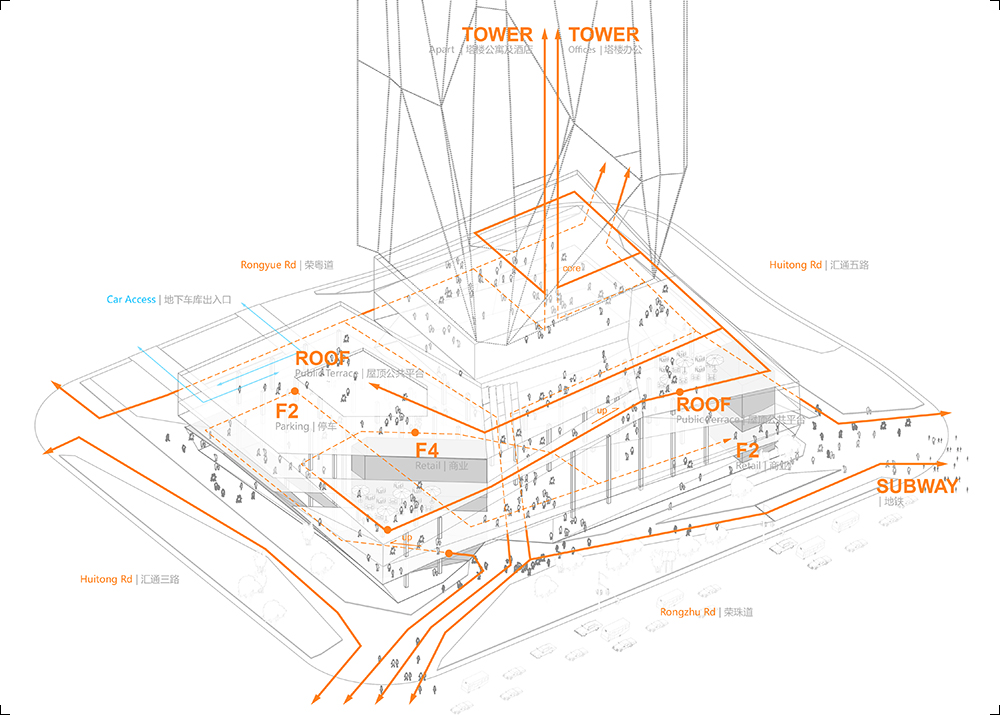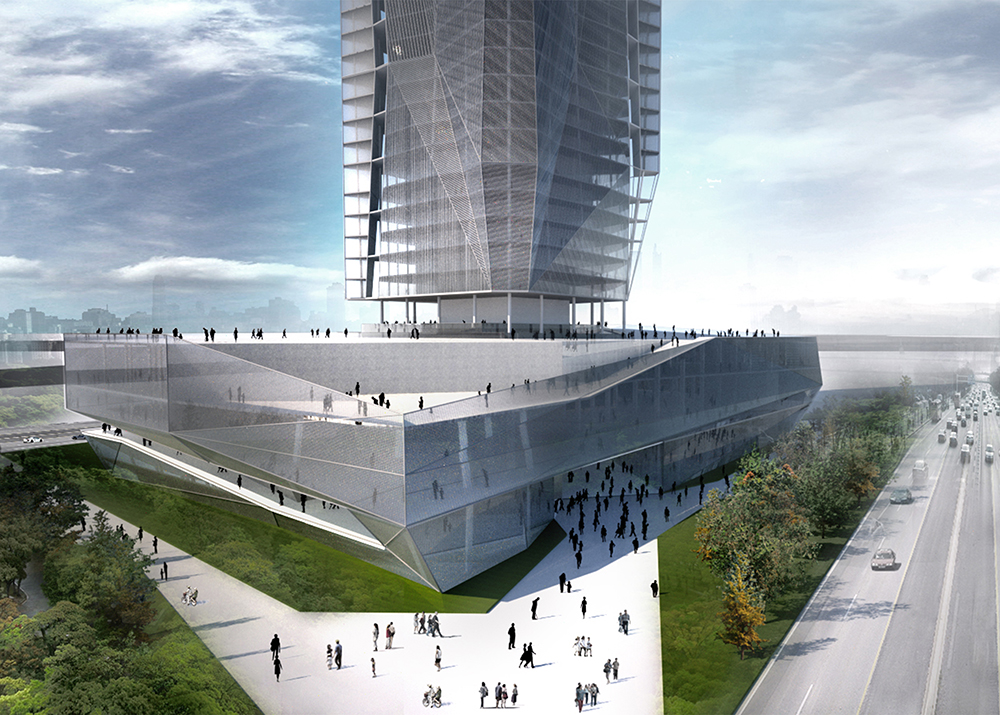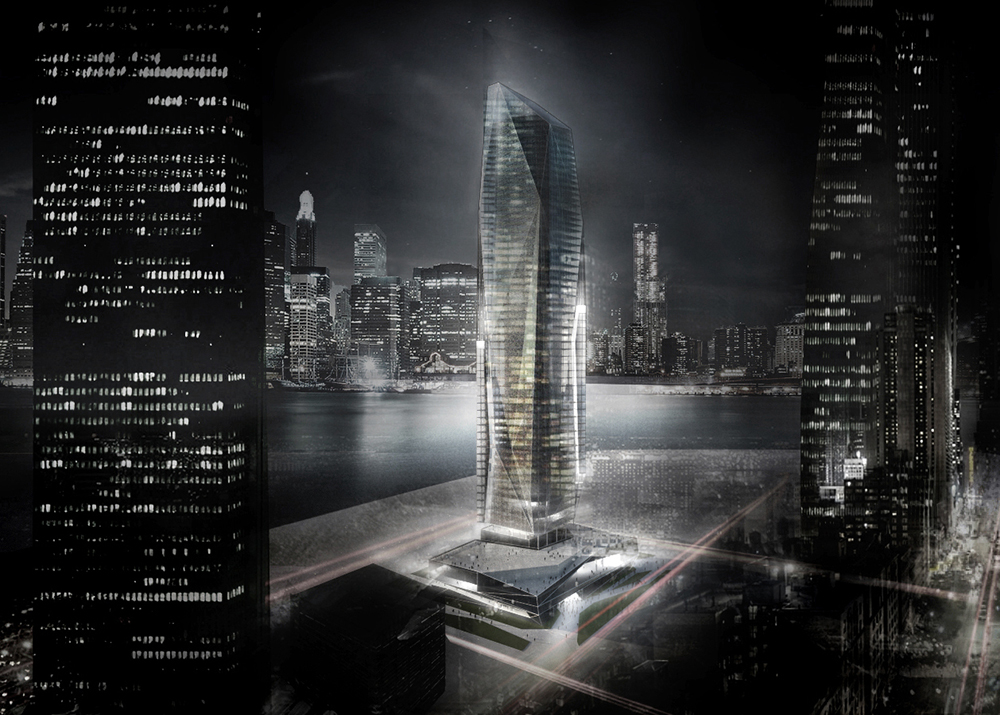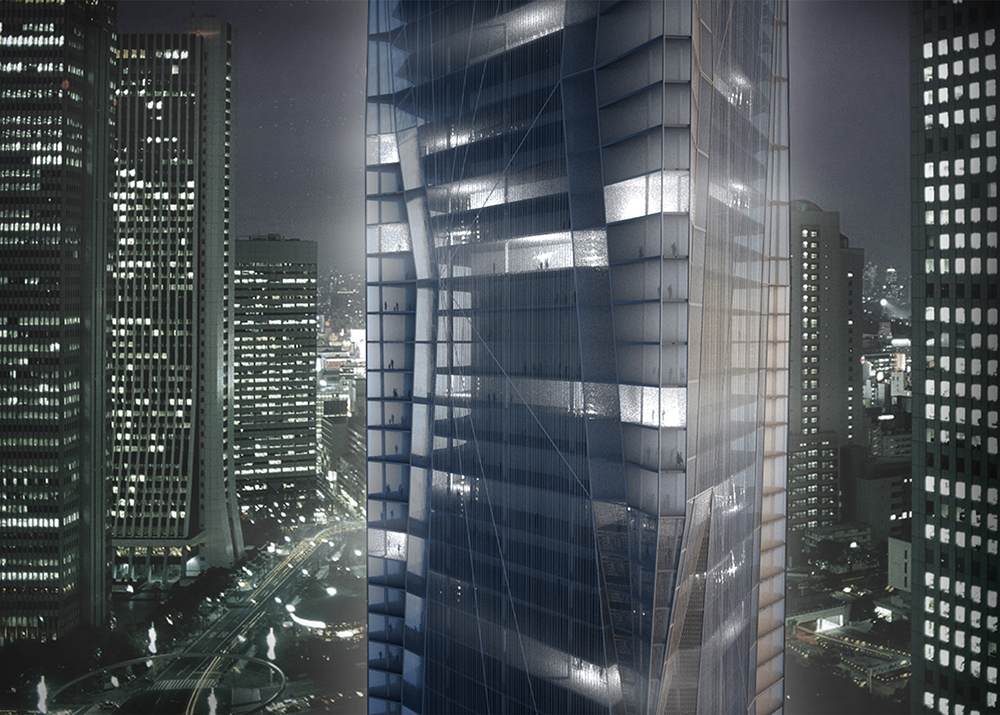ZT tower
Year: 2014
Size: 150,000 m2
Type: mixed-use
Status: competition
Location: Zhuhai, Guangdong, China
Client: Zhuhai Zhongtie Ltd.
Partners in charge: Federico Ruberto, Chen Chen, Nicola Saladino
Design team: Virginia Savoini, Wei Zhao, Tairan An
External collaborator: JAL and Partners

The 300m high Zhongtie Tower is located in Shizimen CBD. This future waterfront landmark is part of Hengqin island Zhuhai City, Guangdong Province, facing directly Hongkong and Macao.
The tower is placed at the northwest corner of the site. A four storey podium encloses the site, taking advantage of the higher commercial value on the east side of the site, brought by the pedestrian flow from the subway and Rongzhu Rd. The ground floor is made permeable through breaking down the massing into intimate street-like scale to allow various fluxes from the city to intersect each other, converging to the very core of the building. A series of ramps in the podium brings people to balconies and terraces on various levels to end on the rooftop public plaza. Continuous circulation extends the surrounding streets into the interior spaces, activating pockets of program at different times of the day.
The building volume and skin, flirting with the modern aesthetics of modernity are prevalently a response to two different inputs: the environmental particularities of the location and the revision of the skyscraper typology. The tower is formed as an aerodynamic response to the prevalent winds and the curtain wall is designed to accommodate panels of different transparencies in accordance to the solar exposure: important conditions for a site located in such a sub-tropical climate. A system of passive ventilation that responds to seasonal variations in temperature is integrated as a volumetric filter on three sides of the tower. An operation that allowed the formation along the vertical axe of the hanging volumes which are mainly containing meeting rooms, intimate stanzas with a view over the landscape This particular move helped in emphasizing the tower vertical silhouette diminishing its portentous and massive visual impact given by the impressive amount of required area. The podium on its side tries to accommodate environmental strategies such as a green roof and a rainwater collection system.
Responding again to conditions that regard solar exposure and visual potentials over the mountains the sea and the city, the program is distributed with a relatively homogeneity along the vertical axe. The building is a two blocks complex: a mix-use podium and a tower that contains offices [F1-44], apartments and hotels [F45-61]. The typical floor adopts an 8m structural grid which provides flexibility needed for multiple layout possibility. The 3.5m structural setback from the façade boundary allows the facade play with subtle folds. The gaps between “hanging pockets” and the main volume are openable to respond to seasonal ventilation requirements.
中铁大厦将坐落于未来高楼林立的十字门中央商务区西区。地段位于广东省珠海市横琴岛,市区南部,珠江口西侧,毗邻港澳。
方案将塔楼布置于地段西北,北、东、南方向则被四层高的裙楼环绕,构成场地的空间围合感,并最大的利用了地段东侧人流带来的商业价值。首层空间打破庞大的建筑体量,形成街巷般亲和的空间尺度,并利于汇聚和梳理来自各个方向的穿过场地及进入建筑不同部分的人流。一系列连续半室外公共空间将人们引入裙房中位不同高度的公共平台,并最终到达裙房屋面公共平台层。连续动线的设计将城市街道空间向建筑内部延伸,并以此激活更多的商业界面。
设计在体量上突出整体造型在竖直方向的动感,幕墙表皮在材料上塑造通透轻盈的视觉效果。此外,体形的推敲和朝向尊重可持续性的设计理念,充分考虑当地气候炎热和日照充足的风、热环境。试图打造一个适应于亚热带季风气候的绿色新地标。根据对不同高度、不同朝向所拥有的不同景观价值、日照条件等的综合评价,方案生成了现在的建筑体量,并采用纵向功能布局的策略,形成以商业为主体,高度功能混合的裙房[F1-F4],和以办公[F1-F44]与酒店公寓[F45-F61]为主体的塔楼空间。标准层的结构布置兼顾经济、灵活分隔需求的同时,允许立面微妙的形体转折。部分角部空间的断开实现不同季节的通风需求,成为可开合“可呼吸的建筑”。
传统办公空间呆板、封闭、单一。未来,交互式办公成为趋势,更开放的空间设计鼓励交流,激发灵感。公共、半公共区域的引入为这些提供可能。办公层的平面设计允许360度全景开放式的大空间办公,也提供多种灵活可变的室内分隔方式,为不同办公需求提供不同尺度、形状的单元空间。一些楼层还设有两层通高的共享空间和角部分离的VIP会客室,提供在高空中背山面海的全景房间中办公的独特空间体验。位于塔楼上部的酒店公寓提供三种50-90平米的户型。200米以上的高空提供了海景起居室和山景卧室的独特可能。
